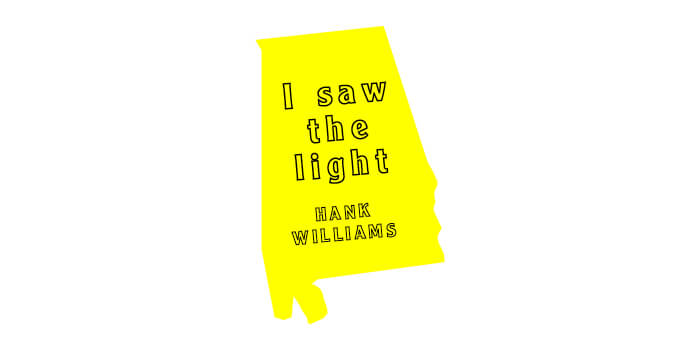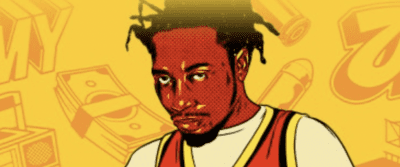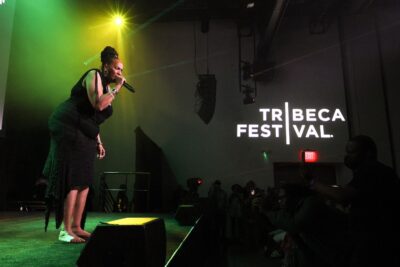Musical Map Of The USA: Alabama—Hank Williams
Montgomery, Alabama’s nickname locally is “The Gump,” and its rhyming implications are not accidental. It’s the capitol of the state, sure, but it doesn’t have much going for it: neither the relative bustle of Birmingham, where I grew up, or the slow, swampy beaches of the coastline. But anyone in Montgomery will cite a succinct, convincing, one-word answer why it’s worth visiting: Hank.
Technically there are three Hanks: Hank Williams, Hank Williams, Jr., and Hank Williams III (or, as I think of them, Big Hank, Little Hank, and ¯\_(ツ)_/¯ Hank.) But there’s not really a question which one an Alabamian is talking about. Hank Williams is one of the patron saints of the state: a hillbilly made good, a man who made Alabama famous rather than infamous, the first country music superstar. The shrine to Hank in Montgomery is a little museum with a very firm no pictures policy. The car Williams died in, a powder blue Cadillac, is their main prize, but the museum also has Williams’ music-note spangled Nudie suit and various other ephemera. Williams’ grave is a short drive away. The ornate headstone looms over a patch of astroturf: after his death, so many fans were plucking blades of grass from Williams’ grave that fake grass was the only way to keep it from being a hillock of bare dirt.
I never listened to country music growing up in Alabama. In high school, I headed directly for the bins of records with The Clash and The Ramones, the used Sonic Youth CDs. Country, as omnipresent as it was, seemed cloying and dumb for the most part. I had heard Hank played all my life: drifting through car windows, wafting over the lake at cookouts, mixed in with Jimmy Buffet covers down at the beach. But it wasn’t until I moved to New York City for college that I started having to explain where I was from, and what it was like to grow up in Alabama, that I started really listening to Hank. When the South was all around me, I didn’t interrogate its stereotypes or its heroes all that much. When suddenly it wasn’t, I was left to piece together a language to explain what was and wasn’t true about my home state.
That first winter I had him in my headphones all the time: “I Saw the Light” and “Cold, Cold Heart” and “Jambalaya” and “Your Cheatin’ Heart.” I wore cowboy boots, despite never owning a pair of them back home. I dug up musicians from the Grand Ole Opry; started listening in earnest to the genre I had written off. My junior year, I had a haphazardly run, embarrassingly earnest country radio hour on our college radio station, named after an appliance store in Mississippi: Cowboy Maloney’s Electric City.
“Southern,” like every identity, is complicated. It isn’t a monolith, but a collection of experiences. Mine, as a white woman growing up in the suburbs of Birmingham, was not really close to Hank’s, in the rural hinterlands of the state before the full force of the civil rights movement. But music can work as shorthand for home across years and life circumstances, and that’s what Hank did for me. Two years ago, when I was doing research on Zelda Fitzgerald’s time in Montgomery–she would play hooky in the same graveyard that Hank was buried in–and brought my then-boyfriend to see the death car. “This Southern thing,” he said, “I think I get it.” And I thought, yeah, I’m getting there too.
This is one of more than 50 posts that make up our musical map of the United States, published by region—the West, Midwest, South, and Northeast—by writers who have strongly associated a song with a state.
[sc name=”nattysaw1″ ]
You might also like 





















